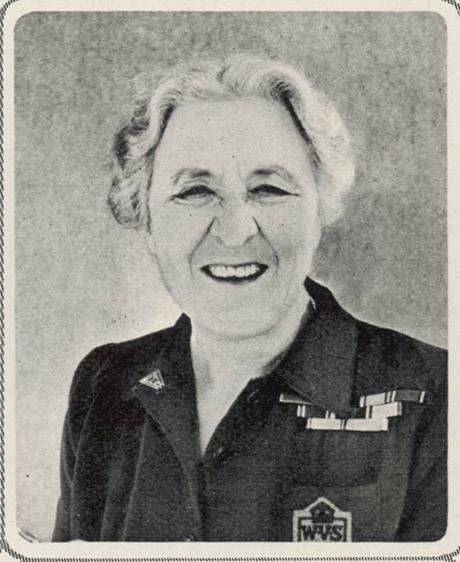It’s been a century since women were first given the vote in the UK and almost as long since the first female MP took her seat in the House of Commons.
So it may surprise you to learn women had to wait another 40 years before finally being granted a presence in the House of Lords.
It wasn’t until the passage of the Life Peerages Act in 1958 that the first female peer – Stella Isaacs, Marchioness of Reading and Baroness Swanborough – gained her place in Parliament’s Upper House.
Isaacs (born Stella Charnaud) had a rough start to life. She was the daughter of Charles Charnaud, director of the tobacco monopoly of the Ottoman Empire and was born in its capital, Constantinople, in 1894.
As a child she suffered from spinal problems which forced her parents to arrange for her to be educated at home.
But by 1914, she was living in London and training as a secretary, which led to her landing a job assisting Lady Reading, the wife of Rufus Daniel Issacs – a senior UK official living in India, who later became a Marquess.
Isaacs later became his private secretary, both at home and at the headquarters of the Imperial Chemical Industries he ran and a year after Lady Reading died in 1930, Isaacs, then in her mid-30s, married her employer.
Shortly afterwards, the now Lady Reading became chair of the Personal Service League, a voluntary society which helped those affected by the post-war economic depression.

In 1938, three years after the death of her husband, she was invited by then-Home Secretary Samuel Hoare to form a service of women attached to local authorities across the country.
Hoare wanted the organisation to be on standby, in case of war, to prepare for the aftermath of possible air raids, helping every household protect itself and its community.
As a result, under the chairmanship of Lady Reading, the Women’s Voluntary Service for Air Raid Precautions (WVS) was formed.
According to a report produced by the House of Lords, the organisation was responsible for “assisting civilians during and after air raids by providing emergency rest centres, evacuating and billeting children, and for the provision of welfare services to the armed services”.
By 1943, the organisation had more than one million volunteers and after the Second World War, its volunteers busied themselves distributing food and clothing donations sent to British people from abroad, helping rehabilitate families and taking care of returning troops.
And if that wasn’t enough, during the same period Lady Reading also acted as vice-chair of the Imperial Relations Trust and became a governor – and later vice-chair – of the BBC. In 1941, she became the first female member of the National Savings Committee, which she served on until 1948.
She was nominated for a life peerage by then-Prime Minister Harold Macmillan, earning the title Baroness Swanborough, on 22 September 1958 and was introduced in the Lords a month later, where she sat as a crossbench peer.
“Baroness Swanborough delivered her maiden speech on 4 March 1959, on the issue of stateless persons and refugees,” the Lords report states.
“Swanborough praised Britain’s record, stating that its leadership in the world ‘excels all other’.
“She drew attention to the work of all the volunteers in the country and the ‘magnificent’ work of the local authorities which were responsible for settling the refugees coming into Britain.
“Swanborough urged the government to support the work of the UN High Commissioner in trying to solve the ‘plight’ of the stateless persons of the world.”

The Baroness spoke on the issue several times during her Parliamentary career and in 1966 she called for the process of granting British citizenship to child refugees to be made easier.
The report goes on: “She argued that children of refugees were left ‘stateless’ because they were not automatically given citizenship of the country of their birth and therefore had to take the nationality of their parents.
“She stated that this situation could ‘go on for generations’, because the process in which children of refugee parents applied for citizenship required ten years’ residence in the country outside of any camp, the payment of a fee and ‘a great many other regulations’.”
She died on 22 May 1971, aged 77.
Women were excluded from the House of Lords before 1958 because only hereditary peers were allowed to sit before then – all of which were men.
Since the passage of the Life Peerages Act, which also saw the debut of non-hereditary male peers, the number of women in the Lords has increased.
There are currently 202 female peers and though they remain outnumbered by men, so far the Lords has had six female Leaders of the House, three female government chief whips and the first two Lord Speakers, who preceded the current Lord Speaker Lord Fowler, were women.
On the 60th anniversary of Baroness Swanborough’s introduction to the Upper House, a Lords spokesperson said the creation of the Life Peerages Act “opened the House to the whole of society, with members being appointed to contribute to our parliamentary democracy based on their knowledge and experience, regardless of their gender or background”.
“Baroness Swanborough... did invaluable work throughout the Second World War with refugees, bombing victims and the armed forces, as well as playing a major part in the evacuation of thousands of city children.”
